This mad-looking thing is the Citroen Oli. It’s a concept car, but unlike a lot of visions of the future, the thinking that has gone into this vehicle is clever and feasible.
The French firm believes current electric cars are too heavy and inefficient, so the Oli is a comprehensive reimagining of how electric cars should be.
Car Dealer was invited to drive the Oli, and here we share the car’s vital statistics. You can also watch James Batchelor’s walk-round and drive of the car in the video at the top of this article.
Styling
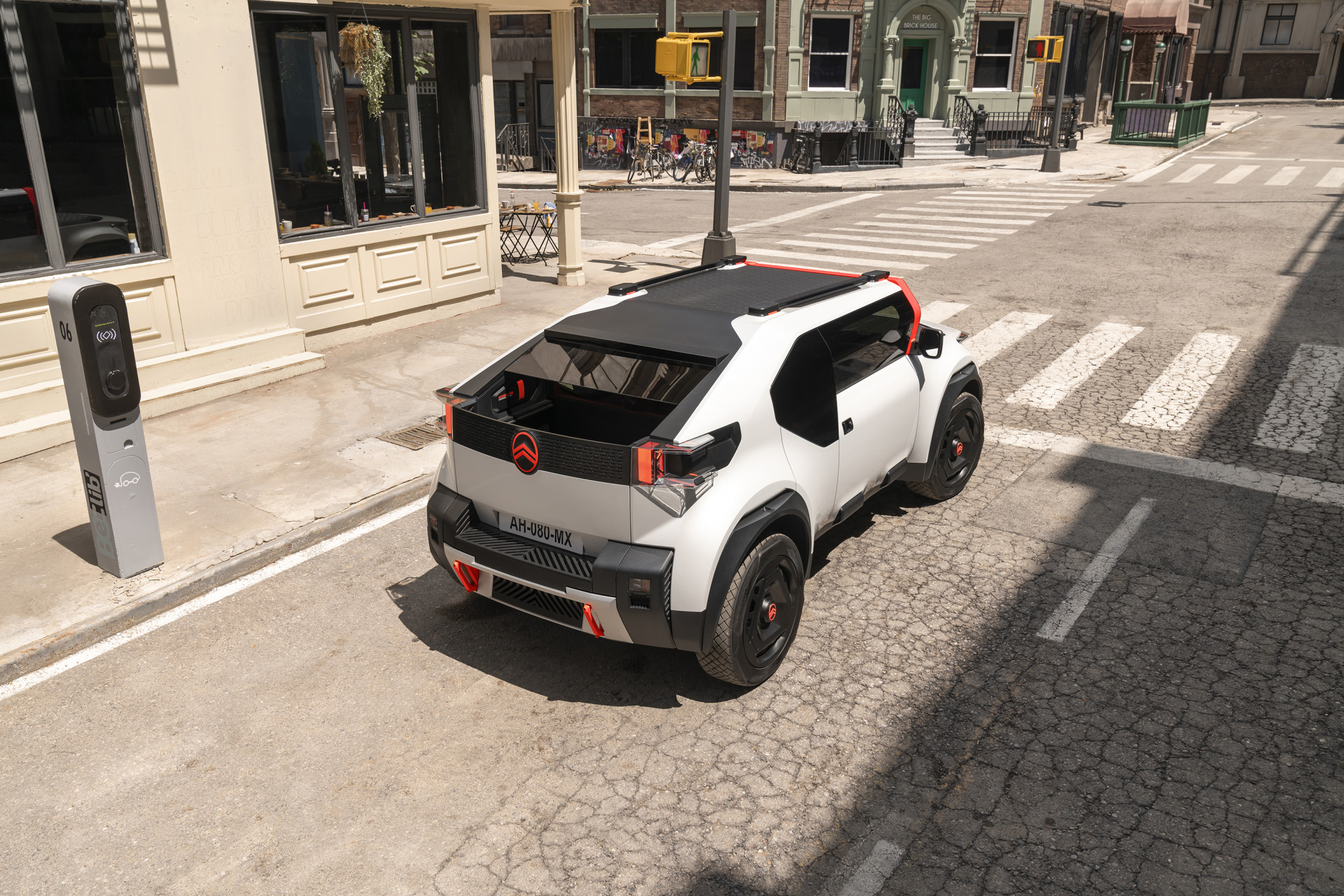
Let’s face it, the Oli looks like nothing else.
One of its distinctive features is its flat windscreen. Having such an upright piece of glass is bad for aerodynamics, but the Oli features special air curtains to push the air away from the screen.
The reason why it’s flat is that it maximises space inside and makes the interior cooler on hot days as it’s in the shade.
The doors, meanwhile, are similar to those on the Mazda MX-30, and the front windows pop out rather than having heavy electric window mechanisms.
Interior
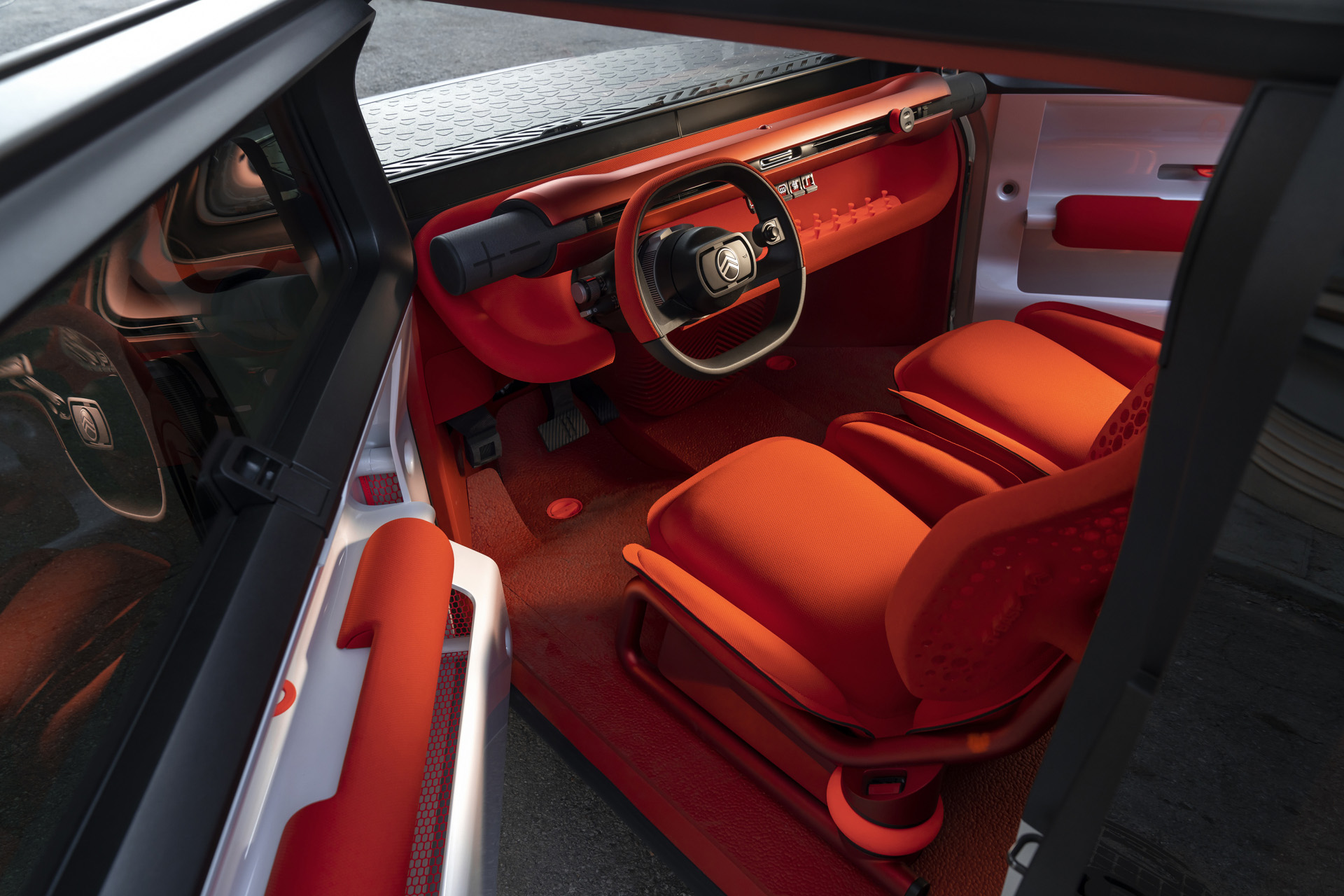
Inside is just as wacky and well thought out.
There’s no infotainment system; instead, the driver slots their phone into a slot in the dash.
The ultra-lightweight seats take design and comfort ideas from the world of the office chair, and the Oli’s sound system consists of removable Bluetooth speakers.
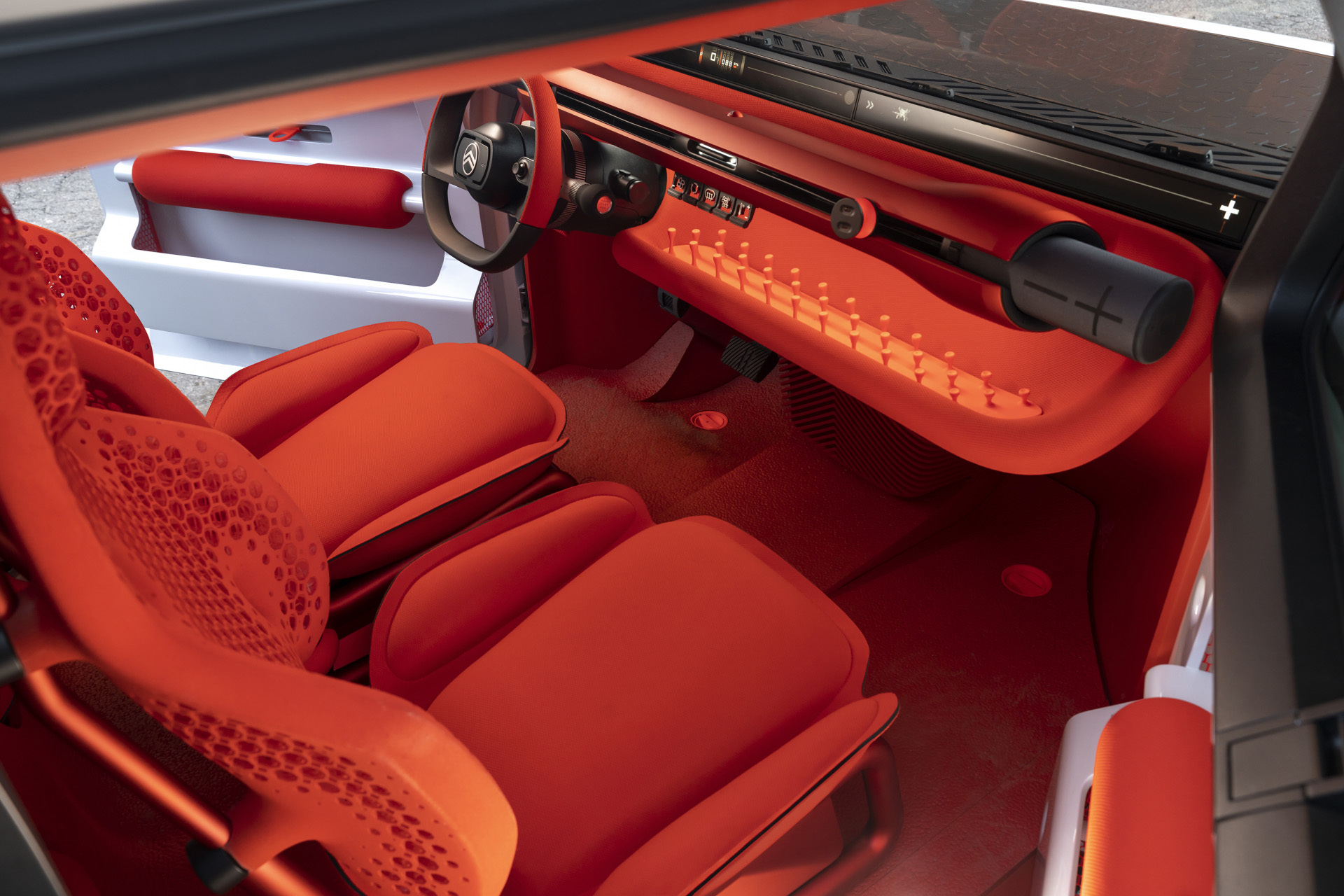
There’s space for four, and the rear loading area can convert into a pick-up.
Wheels
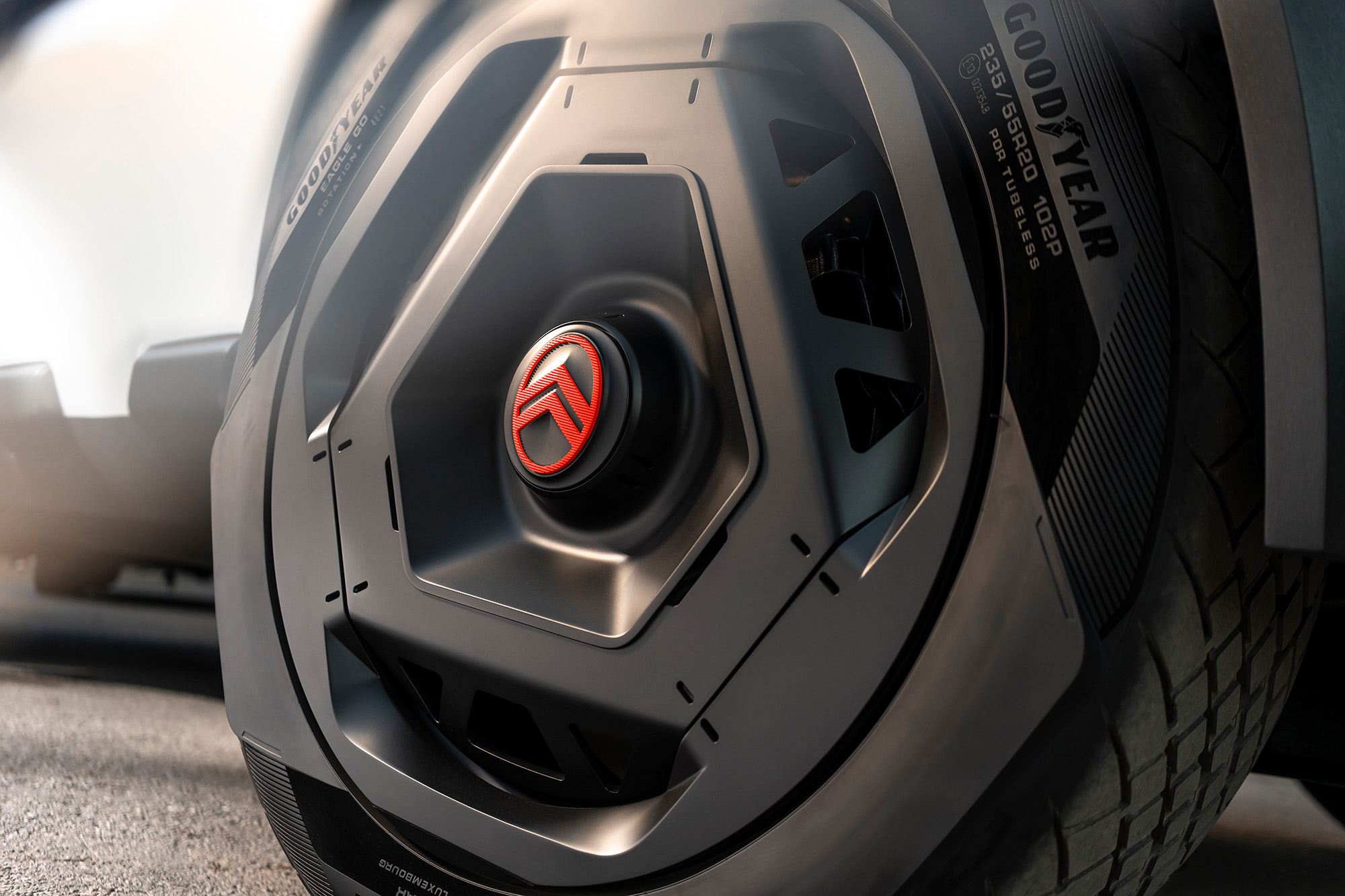
Most cars have either steel or alloy wheels, which tend to be very heavy.
So Citroen has combined the two to make these ones much lighter, contributing to a 6kg weight saving.
The tyres are also experimental ones from Goodyear and feature reusable carcasses – only the tread is replaced, which means less weight, and the tyres themselves last for up to 300,000 miles.
Weight
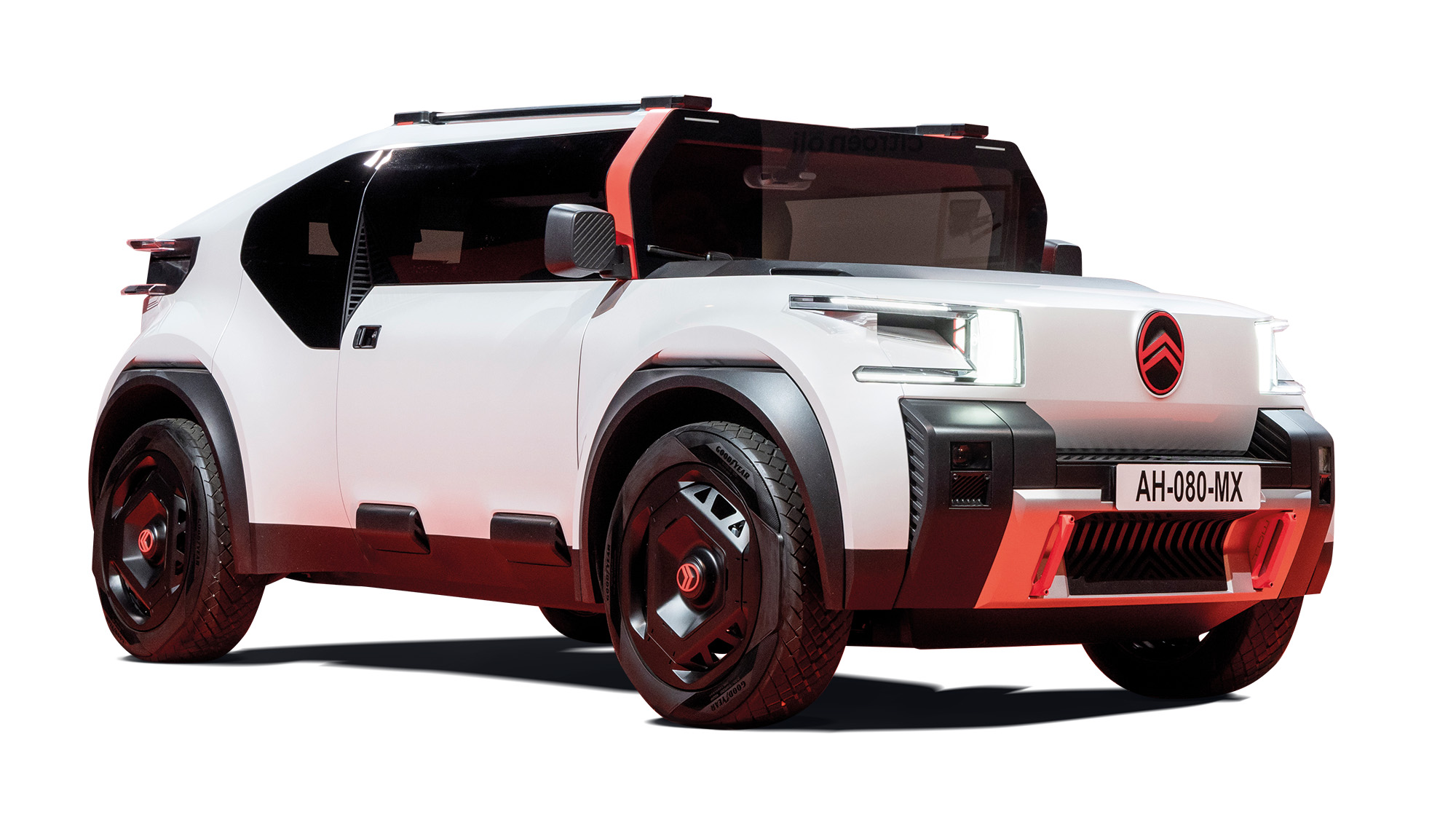
Boy, is the Oli light. It may look like a big car but it has a similar footprint to a Volkswagen ID.3.
However, while the heaviest ID.3s weigh around two tonnes, the Oli only weighs one tonne, which is the same as the considerably smaller and less practical Smart Fortwo.
How is it so light?
Well, the roof, pick-up bed and bonnet are made from cardboard (corrugated cardboard is stuck between fibreglass panels that are then coated in polyurethane paint for strength), which comes in at around half the weight of equivalent steel panels.
Battery
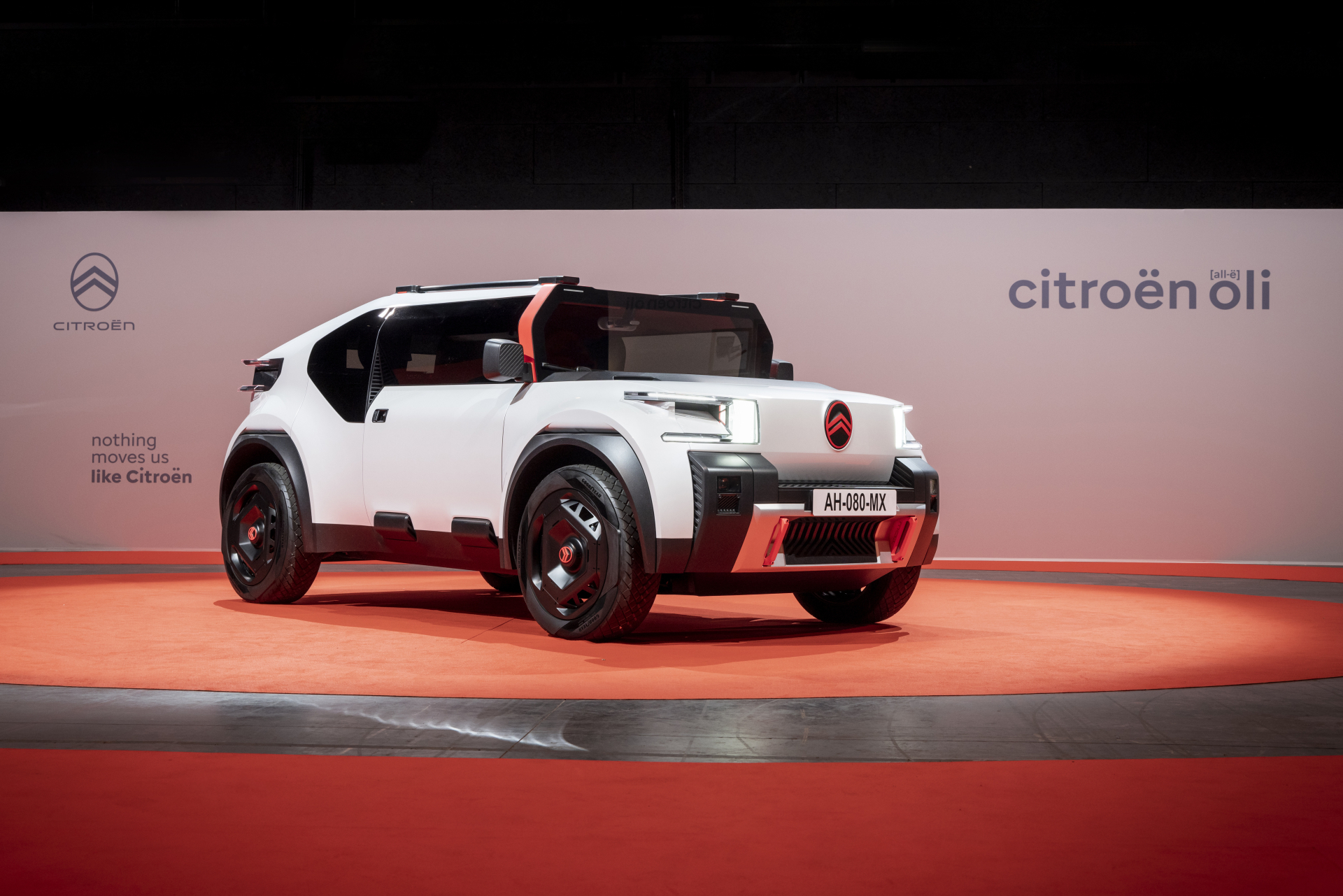
The Oli has a 40kWh battery.
That might seem small, but thanks to the car’s weight and efficiency – Citroen claims six miles per kWh – a range of 250 miles is said to be possible.
Will it make production?
Citroen could put the Oli straight into production, bar a few modifications.
But what’s more likely is the car’s clever features will be seen in future models.
So, expect to see cardboard panels, special seats and lightweight wheels sometime soon.
This feature appears in the current edition of Car Dealer – issue 182 – along with news, views, reviews, interviews and much more! Read and download it for FREE here!

































